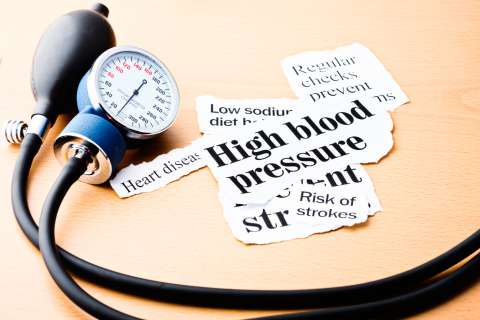Using menopausal hormone therapies to relieve symptoms in post-menopausal women has long raised difficult questions. Is the combination of estrogen and progestin better or worse than estrogen alone? In women who haven't had a hysterectomy and still have a uterus, progestin can counteract the increased risk of uterus cancer that arises when estrogen alone is given — but at the expense of an increased breast cancer risk.
Now, a study by researchers at UCLA's Jonsson Comprehensive Cancer Center has found that women taking combination estrogen-and-progestin therapy who experienced new-onset breast tenderness had a 33 percent greater risk of developing breast cancer than women who didn't experience breast tenderness. And interestingly, women taking estrogen alone who experienced new-onset breast tenderness did not have a higher risk of breast cancer.
"This study showed that developing new breast tenderness after the start of hormone therapy was associated with increased breast cancer risk only in women on the combination estrogen-plus-progestin therapy, not estrogen therapy alone," said the study's first author, Dr. Carolyn Crandall, a UCLA professor of general internal medicine and a scientist with the Jonsson Cancer Center.
The study appears in the Nov. 17 early online edition of the peer-reviewed journal Breast Cancer Research and Treatment.
A previous study by Crandall, published last month, found that breast tenderness was much more pronounced after the initiation of estrogen-and-progestin therapy than after estrogen therapy alone. The association between this new-onset tenderness and changes in breast density also was more pronounced in women receiving combination therapy.
"The consistent theme we've run across throughout these studies is that estrogen and progestin, compared to estrogen alone, have a more marked effect on breast tissue," Crandall said. "One theory is that there may be more growth of breast tissue, making the breasts more dense, when women take the combination therapy."
Multiple population studies have shown that higher breast density is associated with a higher risk of breast cancer. In women with extremely dense breasts, cancer risk can be four to six times higher than in women whose breasts are not dense, Crandall said.
Women taking estrogen did have breast tenderness, though not as much as those on the combination therapy, and it clearly didn't signal an increased risk of breast cancer, Crandall said. She cautioned that women taking hormone therapy in general are only at a slight risk for developing breast cancer overall. A previous study estimated that out of 10,000 women who take combination estrogen-plus-progestin hormone therapy for one year, eight additional women would develop breast cancer than would have normally been expected.
"We don't want to incite panic, because breast cancer is rare in women taking hormone therapy, but the point is that women are terrified of getting breast cancer as a result of menopausal hormone therapy," Crandall said. "Where I think this study would be important is for women already on either combination hormone therapy or estrogen alone. If they do develop breast tenderness, it would be good for them to know the results of this study and to consider discussing them with their physician."
Crandall said it's too early to call for an increase in the frequency of clinical breast exams and mammograms in women on hormone therapy based on these studies. However, a woman on hormone therapy who experiences new-onset breast tenderness should be vigilant about getting her regular clinical breast exams and mammograms.
According to Crandall, one finding in this study was expected: Estrogen-plus-progestin therapy has a greater impact on the breast, and women on combination therapy had more breast tenderness than women on estrogen alone. What was surprising, Crandall said, was that women taking estrogen alone did have breast tenderness, but the tenderness didn't correlate to an increased risk of breast cancer.
"It's intriguing to think the same symptom in two sets of women taking different hormone therapies could mean something different," Crandall said.
For this prospective study, Crandall and her team analyzed data from more than 27,337 women enrolled in the Women's Health Initiative (WHI). Of the 27,337 women, 16,608 were on the combination therapy and 10,739 were taking estrogen alone. Launched in 1991, the WHI consisted of a set of clinical trials and an observational study involving 161,808 healthy, post-menopausal women.
"These findings highlight the complexity inherent in the use of surrogate risk markers to assess menopausal hormone therapy–associated breast cancer risk," the study states.
The study was funded in part by the Eileen Ogle Award of the Iris Cancer–UCLA Women's Health Center; the National Heart, Lung and Blood Institute; the National Institutes of Health; and the U.S. Department of Health and Human Services.
UCLA's Jonsson Comprehensive Cancer Center has more than 240 researchers and clinicians engaged in disease research, prevention, detection, control, treatment and education. One of the nation's largest comprehensive cancer centers, the Jonsson Center is dedicated to promoting research and translating basic science into leading-edge clinical studies. In July 2011, the center was named among the top 10 cancer centers nationwide by U.S. News & World Report, a ranking it has held for 10 of the last 12 years.
For more news, visit the UCLA Newsroom and follow us on Twitter.



